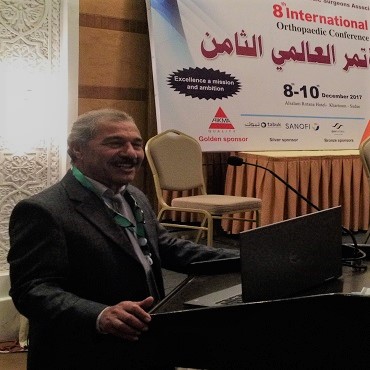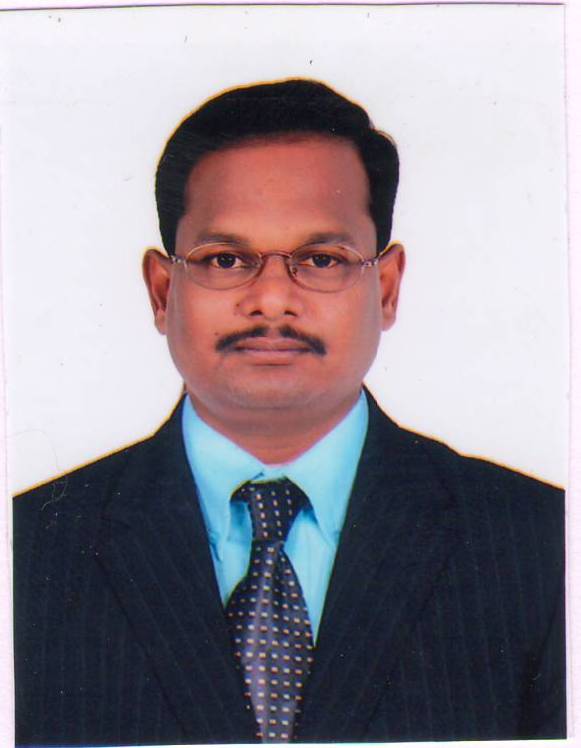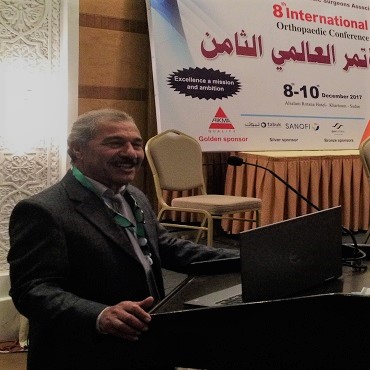Scientific Program
Keynote Session:
Title: To review TCM and the current practices for lower back pain management for a lasting effect.
Biography:
Wong Boh Boi has graduated with a Bachelor of Health Science (Nursing) from the University of Sydney with distinction. She later went on to obtain a Master of Education (Early Childhood Education) and received her PhD from the National University of Singapore.
Abstract:
Objective: To introduce pain management and relief for lower back using the methods of Traditional Chinese Medicine (TCM) and its approach.
Setting: Chien Chi Yow, a Traditional Chinese Medicine company and specialist with over 50 years of experience and expertise. Medical Case studies of 2 patients; Patients Profile and Medical History: Sedentary lifestyle and occupational requirement, Senior & Sportsperson. History of lower back pain and/or have received medicallyinvasive lower back surgery Mothers in their Pre- and Post-Partum
Methods: Uses (but not limited to) a combination of
Meridian point massage (Tui Na), Cupping, Acupuncture, Spinal Lumbar Reconstruction and Encourage Stretching Exercise.
Results: Participants experience significant pain relief after the TCM treatment compared to before treatment was done.
Conclusion: While TCM is proven to be able to significantly manage and relieve the lower back pain with TCM approach, good advisory and counseling are as important to reinforce the importance of a healthy lifestyle for an enhanced quality of life.
Title: The integrated Spring-Mass model approach to treating Thoracic Outlet Syndrome
Biography:
James Stoxen, DC, FSSEMM (hon) FWSSEM, is the president of Team Doctors, Chicago, Illinois, one of the most recognized treatment centers in the world. He has been invited to give scientific presentations at over 60 medical conferences in over 20 countries. In 2015 he was awarded an honorary fellowship by a member of the royal family, the Sultan of Pahang, at the World Congress of Sports and Exercise Medicine for his distinguished research and contributions to the advancement of sports and exercise medicine on an International level.
Abstract:
The use of hand held devices (HHD) such as mobile
phones, game controls, tablets, portable media players
and personal digital assistants have increased dramatically in past decade. This drastic change has led to new batch of difficult to treat, musculoskeletal Disorders of the Upper Extremities such as myofascial pain syndrome of neck and upper back and thoracic outlet syndrome. The thoracic outlet anatomy and how the bundle passes through the passageway is complex for even musculoskeletal experts. So for doctors trained in other specialties there can be an inadequate understanding about nature and cause of thoracic outlet syndrome. A syndrome rather than a disease, the Mayo Clinic, Cleveland Clinic and the National Institute of Neurological Disorders And Stroke, plus top 10
ranked hospitals for neurology and neurosurgery agree
persistent compression of nerves, arteries and veins
traveling through the thoracic outlet is what leads to
thoracic outlet syndrome. I will discuss the three models of human movement, the inverted pendulum model, the spring-mass model and the integrated spring-mass model (ISMM). The (ISMM), which integrates the spring suspension systems of the foot and shoulder region as well as the torsion spring of the spine and the mass, the head. I will discuss my clinical findings show compressive disorders like TOS and herniated discs are merely an over control of tension on the human spring mechanism leading to these syndromes. I will give brief review of the symptoms and their patterns, the common orthopedic tests, and diagnostic tests, the 16 different common conservative therapies and the 10 reasons for when surgery is medically necessary. I will discuss an alternative treatment for this disorder based on the integrated spring mass model.
Title: Why patients with knee pain still have symptoms despite the use of anti-inflammatory medications?
Biography:
Huang Wei Ling has graduated in medicine in Brazil, specialist in infectious and parasitic diseases, a General Practitioner and Parenteral and Enteral Medical Nutrition Therapist. Once in charge of the Hospital Infection Control Service of the City of Franca’s General Hospital, she was responsible for the control of all prescribed antimicrobial medication and received an award for the best paper presented at the Brazilian Hospital Infection Control Congress in 1998. Since 1997, she works with the approach and treatment of all diseases of all systems of the human body in a holistic way, with treatment guided through the teachings of Traditional Chinese Medicine and Hippocrates.
Abstract:
Statement of the Problem: According to Western Medicine, chronic knee pain can have different causes. The problem is usually associated with sprained ligaments, meniscus tears, tendinitis, and runner's knee. The usual treatment is done with ice, stretching exercises and antiinflammatory medications. According to Traditional Chinese Medicine (TCM), the knee pain is associated with invasion of External Wind, Cold, Damp and Heat, deficiency of Liver and Kidney, or deficiency of Qi and Blood. Purpose: Demonstrate that by using anti-inflammatory for the treatment of knee pain, we will be causing a greater injury in Kidney and Liver energy, according to TCM, which are responsible for the integrity of the knee. Therefore, the use of these medications will worsen the energy imbalance, maintaining the pain condition. Methods: The description of two case reports of 65 and 70-year-old patients with chronic knee pain, who were using anti-inflammatory drugs for long periods without any significant improvement, only side effects such as epigastric pain and drug intolerance. They sought acupuncture in an attempt to control their pain without having to use such medications. Results: There was a significant improvement in pain symptoms when using acupuncture, dietary counseling and general guidelines on external pathogenic factors such as Wind, Cold, Humidity, and so on. We noticed that when the patient underwent treatment to restore the energy of the chakras corresponding in TCM to the Five Elements, the pain that the patient presented disappeared completely. Conclusion: In order to adequately treat patients with knee pain, we should understand more deeply the significance of this symptom at the energy level by treating the organs that command the knee such as Liver and Kidney according to TCM. The treatment of energy replacement of the internal organs through crystals-based drugs has proved to be very important for the consolidation of the treatment.
Title: Expression levels of obesity - related genes in high fat diet (HFD) induced experimental animals: Impact of combination therapy of anti-obesity drugs
Biography:
P Venkataraman has completed his MPhil degree from department of Endocrinology, University of Madras, Chennai, India and awarded PhD degree at the age of 32 years from the same department. At present he is working as an Assistant Professor in Department of Medical Research, SRM Medical College Hospital and Research Centre, SRM University, Chennai, INDIA. He has an extraordinary ability in the field of Molecular, Environmental and Neuroendocrinology. He has published his research works in 41 international peer reviewed journals especially Journal of Nutritional biochemistry, Endocrine research, Neurotoxicology, International Journal of Developmental Neuroscience, Neuroscience Research, BBA Clinical, Obesity medicine, Biomedicine and Pharmacotherapy. He is the reviewer in reputed journals especially Biomedicine and Pharmacotherapy, Comparative Clinical Pathology and Reproductive Sciences. He is also the editorial board member in Journal of Experimental and Integrative Medicine and Journal of clinical and Molecular endocrinology. He has participated and presented many research papers in International and National conferences in the field of Reproductive and comparative endocrinology and environmental toxicology. He served as a resource person in two national workshops (DST, DBT, ICMR and CSIR sponsored) entitled, “Techniques in molecular and cellular endocrinology”, organized by Department of Endocrinology, University of Madras on 2010 & 2013. He is supervising 8 PhD students and among them two students got PhD degree.
Abstract:
Obesity is a global health problem and also a strong risk factor for type 2 diabetes mellitus, cardiovascular diseases and obesity genes play a major role in the central regulation of energy balance. Orlistat (Xenical, Alli) is a synthetic anti obesity drug approved by European Medicines Association (EMA) and Food and drug administration (FDA). But studies shown, orlistat supplementation causes severe liver and kidney injury. Melatonin, an indolamine, produced by the pineal gland plays a major role in circadian rhythm and one of the powerful antioxidant. Literatures shown, it also exerts control over metabolic functions that determine fat accumulation and obesity and it also protects environmental toxicants induced liver and kidney injury. Garlic (Allium sativum L.), has been used as medicinal and alimentary medicine from ancient period and these has been used extensively worldwide especially in countries like India. Studies reported garlic and its constituents have shown the various biological activities especially against cardiovascular disease due to its blood lipid-lowering, antithrombosis, antioxidant effects and inflammatory response. Diallyl trisulphide (DATS), a natural product from garlic have gained attention in many biological activities. Based on literatures and to compensate the orlistat induced side effects, we propose to study the expression levels of obesityrelated genes in high fat diet (HFD) induced experimental animals and also to see the impact of melatonin alone and in combination with DATS supplementation compared to orlistat alone therapy. We studied mRNA and protein expression of KSR2, IRX3, FTO and Neuropeptide Y by real time PCR and western blot method in liver, adipose tissue and brain of experimental animals along with antioxidant and liver function parameters. Histological observations of liver and adipose tissue were also studied. Based on results we found that both the melatonin and DATS alone and its combination with orlistat therapy is efficacy and safety when compared to orlistat alone therapy. This study determined the clinical usefulness of melatonin and DATS as supplemental therapeutic agents in obesity induced liver and kidney dysfunction as well as in orlistat therapy and it may help in providing the therapeutic options to tackle the obesity without causing side effects.
A PHP Error was encountered
Severity: 8192
Message: trim(): Passing null to parameter #1 ($string) of type string is deprecated
Filename: pastconference/past-program-schedule.php
Line Number: 239
Backtrace:
File: /efsdata/meetingsint-com/application/views/pastconference/past-program-schedule.php
Line: 239
Function: trim
File: /efsdata/meetingsint-com/application/controllers/Pastconference.php
Line: 128
Function: view
File: /efsdata/meetingsint-com/index.php
Line: 317
Function: require_once
Title: Can metallic surgical implants influence the body’s health?
Biography:
Abstract:
Keynote Session:
A PHP Error was encountered
Severity: 8192
Message: trim(): Passing null to parameter #1 ($string) of type string is deprecated
Filename: pastconference/past-program-schedule.php
Line Number: 239
Backtrace:
File: /efsdata/meetingsint-com/application/views/pastconference/past-program-schedule.php
Line: 239
Function: trim
File: /efsdata/meetingsint-com/application/controllers/Pastconference.php
Line: 128
Function: view
File: /efsdata/meetingsint-com/index.php
Line: 317
Function: require_once
Title: Why orthopedic patients still catch hospital infections despite the practice of infection prevention and control programs & can hospital Osteomyelitis be treated without the use of antibiotics?
Biography:
Abstract:
Statement of the problem: Very few publications provide sound scientific data used to determine which components are essential for Infection Prevention and Control (IPC) programs in terms of effectiveness in reducing the risk of infection. As surgical procedures are common in the orthopedics specialty, the difficulty in preventing infections influences the orthopedic treatment outcome. The purpose of this study was to show why patients still catch hospital infections despite IPC programs. A better understanding of a variety of theories could explain the physiopathology of diverse diseases described in the medical past history, as in Traditional Chinese Medicine. A broader view seems to show the necessity of seeing the patient completely; not only focusing on the disease in the prevention of these hospital infections. The methodology used was a review of these theories such as those presented by Hippocrates (“Natural forces within us are the true healers of disease.”), as well as others from oriental medicine, which explain that diseases originate from three factors: external (exposure to cold, heat, humidity, wind and dryness), internal (emotional) and dietary.
Title: Integrated role of yoga and physiotherapy in sports injuries prevention
Biography:
Abstract:
Title: A modified Sayre’s technique, for correction of congenital Radial Club Hand Deformity
Biography:
Abstract:
Oral Session 1:

Chair
James Stoxen
Team Doctors Treatment Center, USA

Co-Chair
Abdulrahim Aljayar
Aljala Teaching Trauma Hospital, Libya
Title: Anatomical variants of the circle of willis: A computed tomography angiography based study
Biography:
Abstract:
Title: Assessment of RV function in ASD by using tissue doppler imaging and strain rate imaging
Biography:
Abstract:
Title: The effect of flaxseed powder & oil on reduction of hyperglycemia and associated parameters in Streptozotocin-induced diabetic rats
Biography:
Abstract:
A PHP Error was encountered
Severity: 8192
Message: trim(): Passing null to parameter #1 ($string) of type string is deprecated
Filename: pastconference/past-program-schedule.php
Line Number: 354
Backtrace:
File: /efsdata/meetingsint-com/application/views/pastconference/past-program-schedule.php
Line: 354
Function: trim
File: /efsdata/meetingsint-com/application/controllers/Pastconference.php
Line: 128
Function: view
File: /efsdata/meetingsint-com/index.php
Line: 317
Function: require_once
Title: Robotic equipment in upper limb amputations
Biography:
Abstract:
Title: Ganglion cyst of Hoffa’s fat pad of knee-a rare cause of anterior knee pain and swelling
Biography:
Abstract:
A PHP Error was encountered
Severity: 8192
Message: trim(): Passing null to parameter #1 ($string) of type string is deprecated
Filename: pastconference/past-program-schedule.php
Line Number: 354
Backtrace:
File: /efsdata/meetingsint-com/application/views/pastconference/past-program-schedule.php
Line: 354
Function: trim
File: /efsdata/meetingsint-com/application/controllers/Pastconference.php
Line: 128
Function: view
File: /efsdata/meetingsint-com/index.php
Line: 317
Function: require_once
Title: A rare case of traumatic posterior dislocation of hip in a 7 year old child following trivial trauma
Biography:
Rakesh Goyal has completed his Master of surgery in field of orthopedics from Gujarat University, India. Previously he has worked as Senior Resident in Sir GangaRam Hospital, New Delhi. He is currently working as Senior Resident in department of orthopedics in Lok Nayak Hospital and Maulana Azad Medical College, New Delhi, India.
Abstract:
A PHP Error was encountered
Severity: 8192
Message: trim(): Passing null to parameter #1 ($string) of type string is deprecated
Filename: pastconference/past-program-schedule.php
Line Number: 354
Backtrace:
File: /efsdata/meetingsint-com/application/views/pastconference/past-program-schedule.php
Line: 354
Function: trim
File: /efsdata/meetingsint-com/application/controllers/Pastconference.php
Line: 128
Function: view
File: /efsdata/meetingsint-com/index.php
Line: 317
Function: require_once
Title: Management of Medial Patellofemoral ligament injury- A case report
Biography:
Abstract:
A PHP Error was encountered
Severity: 8192
Message: trim(): Passing null to parameter #1 ($string) of type string is deprecated
Filename: pastconference/past-program-schedule.php
Line Number: 354
Backtrace:
File: /efsdata/meetingsint-com/application/views/pastconference/past-program-schedule.php
Line: 354
Function: trim
File: /efsdata/meetingsint-com/application/controllers/Pastconference.php
Line: 128
Function: view
File: /efsdata/meetingsint-com/index.php
Line: 317
Function: require_once
Title: A rare case of giant cell tumor of tendon sheath of Hoffa’s fat pad of knee misdiagnosed as ganglion cyst
Biography:
Rakesh Goyal has completed his Master of surgery in field of orthopedics from Gujarat University, India. Previously he has worked as Senior Resident in Sir GangaRam Hospital, New Delhi. He is currently working as Senior Resident in department of orthopedics in Lok Nayak Hospital and Maulana Azad Medical College, New Delhi, India.
Abstract:
Title: A two-pointer filtering method on breast ultrasound images (BUS) to improve segmentation with traditional algorithms
Biography:
Abstract:
A PHP Error was encountered
Severity: 8192
Message: trim(): Passing null to parameter #1 ($string) of type string is deprecated
Filename: pastconference/past-program-schedule.php
Line Number: 354
Backtrace:
File: /efsdata/meetingsint-com/application/views/pastconference/past-program-schedule.php
Line: 354
Function: trim
File: /efsdata/meetingsint-com/application/controllers/Pastconference.php
Line: 128
Function: view
File: /efsdata/meetingsint-com/index.php
Line: 317
Function: require_once



















